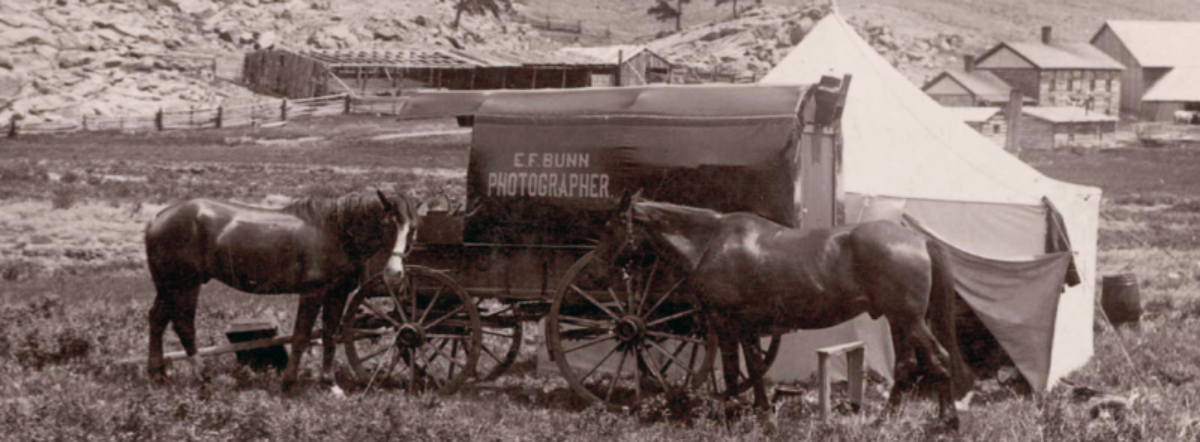Anna M. Tweed was born in Kansas circa 1864 to William Wilson and Eliza A. Thompson Tweed. The Tweed family lived in Wakarusa, about seven miles south of Lawrence, Kansas. They moved to Colorado Springs around 1878 where Anna’s father was the director of a mining company.

In the mid-1890s, Anna pursued photography, with a studio at her brother’s property, Glen Cove, on Pike’s Peak Carriage Road in Colorado Springs. She specialized in local scenery printed on boudoir card mounts. In 1900, she worked for photographer Fred P. Stevens.
That fall, Anna accepted a position with Foltz and Hardy’s new book, stationery, and art store in the Exchange National Bank block. According to an article in the Colorado Springs Gazette, “her natural talents as an artist, and pleasing manners with customers, proved materially instrumental in the upbuilding of that popular firm.” She was employed there for five years before taking a similar position at Kendrick’s bookstore in Denver. In 1905, Anna’s landscape photographs were published in At the Foot of Pike’s Peak a collection of poems by Colorado Springs author Mrs. Lelah Palmer Morath.

After a brief time in Denver, Anna returned to Colorado Springs. In the years that followed, she traveled extensively, visiting Hot Springs, Arkansas; Las Vegas, New Mexico; Phoenix, Arizona; Los Angeles, California; San Francisco, California and Tacoma, Washington.
In 1913, Ms. Tweed moved to New York City where she represented Wallace Nutting, a New England landscape photographer. While on vacation in Colorado Springs during the summer of 1913, she brought 600 Nutting photographs with her and displayed them at Harding’s art store. She lived in New York City for several years, but by 1923 she had moved to Los Angeles, where she resided until her death on December 21, 1945. She is buried at Forest Lawn Memorial Park in Glendale, CA.
For more information about female photographers who worked in Colorado Springs see Searching for the Early Women Photographers of the Pikes Peak Region by Nancy Bathke and Brenda Hawley in Film & Photography on the Front Range, Pikes Peak Library District, 2012.
Thank you to Hillary Mannion, Archivist, Colorado Springs Pioneers Museum for assistance with acquiring the scan of the Tweed family and to Beverly W. Brannan for proofreading this post.














